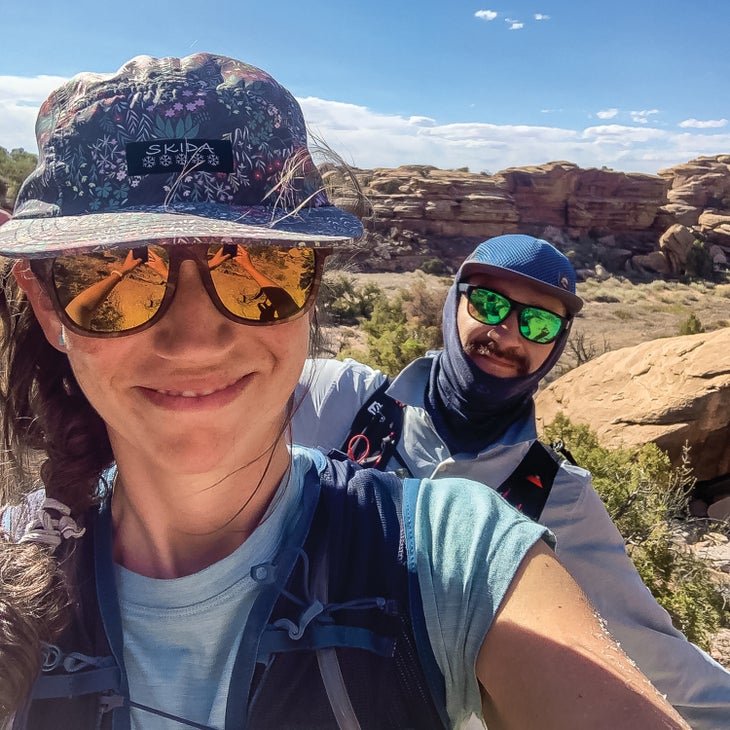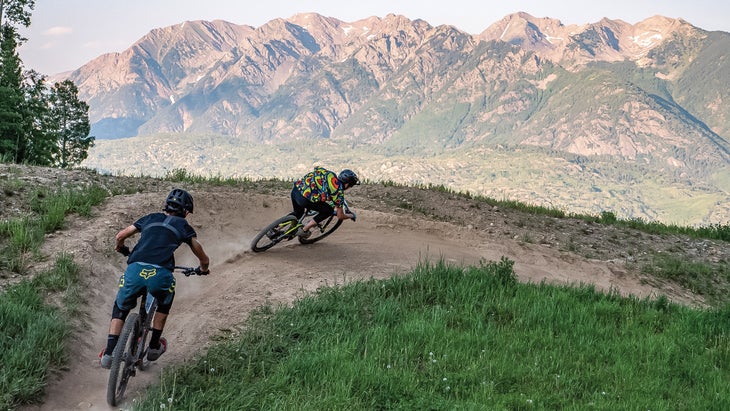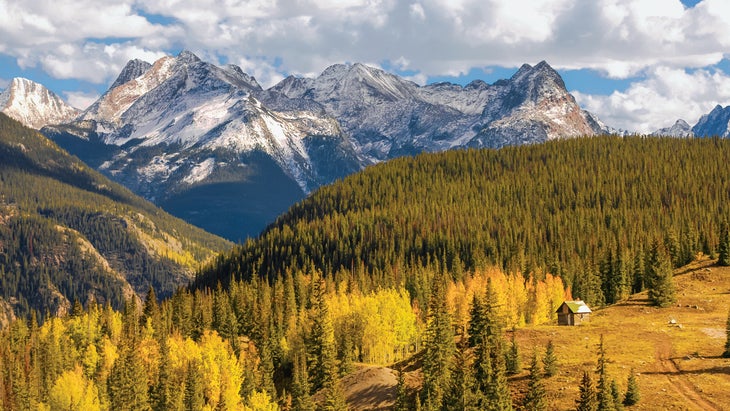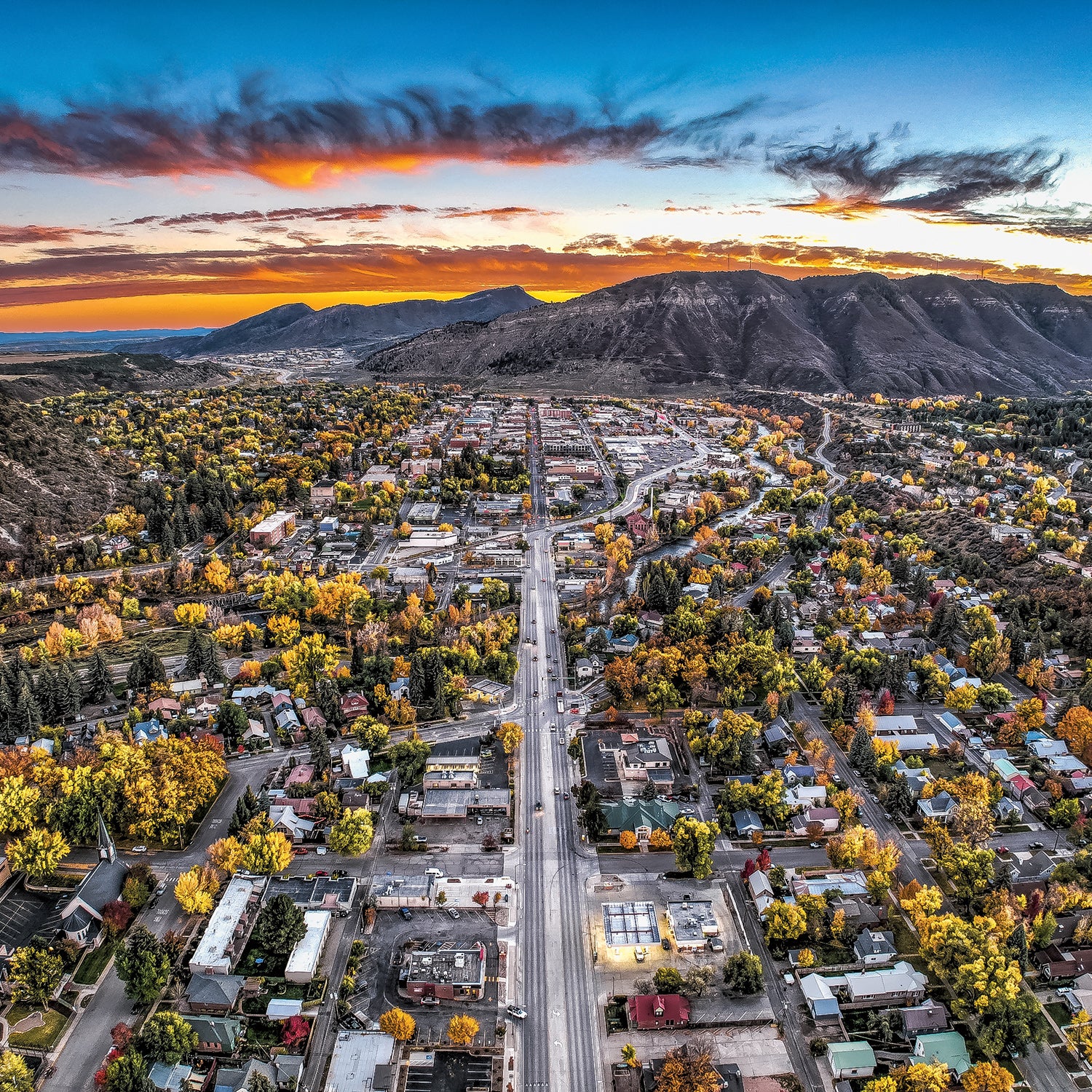Thomas knew before I did that this might be the place. “I like it here,” he said two summers ago as we pulled out of Durango, Colorado, after a whirlwind weekend. We’d floated the Animas River at dusk, then pedaled up Telegraph Hill early the next morning, beating the heat of the day as we bombed down Big Canyon singletrack with friends. “I can see us living here,” he added as we drove toward the Utah border.
My fiancé and I were on the road trying out new towns, because I’d convinced him that we had to move. I just didn’t know where to exactly. The question had consumed me for as long as I could remember. After years of rolling through seasonal resort towns as a river guide and ski bum (eventually writing books about each experience: and , respectively), I’d eddied out in Seattle—a city I didn’t love—pinned down by inertia and an inability to hit upon what came next. So many locations seemed out of reach; my cloudy desire for a new place to live was starting to drive Thomas and me crazy.
I knew I wanted to be near the mountains, somewhere that made it easy to spend the bulk of my free time outside. In Seattle we lived in a basement apartment two blocks from the highway, fighting traffic to get to trails. Where a person lives dictates so much: community, culture, commute time. Mountain towns have what I’m looking for in these three regards. But the economics weren’t in our favor. Housing and rental prices have skyrocketed, driven up by market forces and wealthy second-home owners, while in-town wages and job opportunities have remained stagnant. Meanwhile, approval, funding, and support for new affordable housing are hard to come by.

I wasn’t special in terms of the frustration I felt hunting for a dream town. For a person of my age (older millennial) and income bracket (as a freelance writer, modest), living somewhere desirable had become tougher than ever. Thomas and I knew we’d be priced out of most classic ski towns, and cost-of-living considerations were pushing local culture and community out of other locales we’d hoped to consider. We tried to avoid regions we thought were especially vulnerable to fire and drought.
that how you spend your days is how you spend your life. That phrase kept running through my mind and stressing me out. I couldn’t settle on the right place to spend my days, so I stayed stuck, growing anxious as they continued to fly by.
But indecision was a recipe for torment, so to overcome paralysis, we drew up a spreadsheet. We sat on our tiny patio in Seattle, in the heat of a smoky summer that was rife with nearby wildfires, and made a list of every possible place we might want to end up.
We could move to the Mad River Valley of Vermont, close to my family but far from the rangy western mountains that felt like home. Or we could try Boise, Idaho, where Thomas could keep his job as a project manager for a construction company, but where we didn’t know anyone. His favorite place, central Oregon, would mean settling down far from the Rocky Mountain rivers I loved, but if we moved to the Colorado Plateau, there was no guarantee that those rivers would remain runnable in the face of ongoing aridification. Plus, if we picked Colorado, would there be a Vermont-size ache in my chest?
It was, after all, about more than just place. It was about identity, along with the future we were lining up for ourselves. No matter where we moved, it felt like I was giving up on some part of a dream. There was Annie Dillard echoing in my head again as we waffled and wasted time.
We made a four-circle Venn diagram with the factors that felt most important: people we loved nearby, easy access to the outdoors, affordable real estate, and a strong likelihood of remaining livable from a climate standpoint. We monitored housing costs and annual precipitation to address some of our more pressing concerns, and winnowed our options down.

In the summer of 2021, I drove toward the Rocky Mountains, and Thomas flew out to meet me as soon as he could break free from work. We crashed at friends’ houses in five states, in places like Carbondale, Colorado, and Bend, Oregon. We took bike rides through neighborhoods, checked out grocery stores and downtown districts, and tried to imagine how we’d spend our days.
I was pining for a place I’d never been to before, one that probably wasn’t even real. But I was convinced I’d know it when I saw it. In German, this is called fernweh, or “far sickness.”
But trying to align an ideal with reality is a dicey business. When you operate out of dreamland, you run up against some serious constraints. During the previous winter, for example, after a clear blue morning of nordic skiing in Crested Butte, Colorado, I’d decided: This is the place. Then I checked the Zillow listings.
The economics may have been out of my control, but I was also tangled up in what it meant to me to grow up and settle down. I wanted to live in a place that I loved, something that seemed to have been readily accomplished by friends of mine, who’d found their home in the world apparently angst-free. I felt jealous and lost, deep in fernweh and getting nowhere.
My desire for a home that felt true to my values jibes with the theory of place-based happiness; psychologists refer to this as person-environment fit. It’s the idea that certain people feel more at home in certain spots. It’s why some of us love buzzy cities and others crave the feeling you get from big skies and wide-open plains.
I obsessed for another six months before we finally made a move. There was no sign from the universe—we just headed in a general direction and eliminated certain options the more realistic we were forced to be. As the field narrowed, our minds kept drifting back to the southwest corner of Colorado, where the desert hits the mountains, and where Thomas had said he could imagine us living. I started to see it, too, even though it meant giving up on other versions of the fantasy.

Here’s the thing about a dream town: either it stays in your head, beautiful but naggingly unsatisfying, or at some point it stops being a fantasy and becomes reality. Then you have to live there—pay rent and sit in traffic and take the tough parts along with the good ones. You have to abandon that sense of far sickness, or you’ll ache for the rest of your life.
We now live in Durango, in a rental house two blocks from the Animas. I’m still worried about the rising cost of real estate and the creeping drought. I still awkwardly invite people to dinner, hoping that at some point community will seem effortless. And I still feel that ache whenever my mom sends me pictures from Vermont. But there’s a ski hill nearby, and I can watch the light hit the La Plata Mountains in the morning. My days are adding up to a life I like, even if I’m not always sure I’m living the dream.


